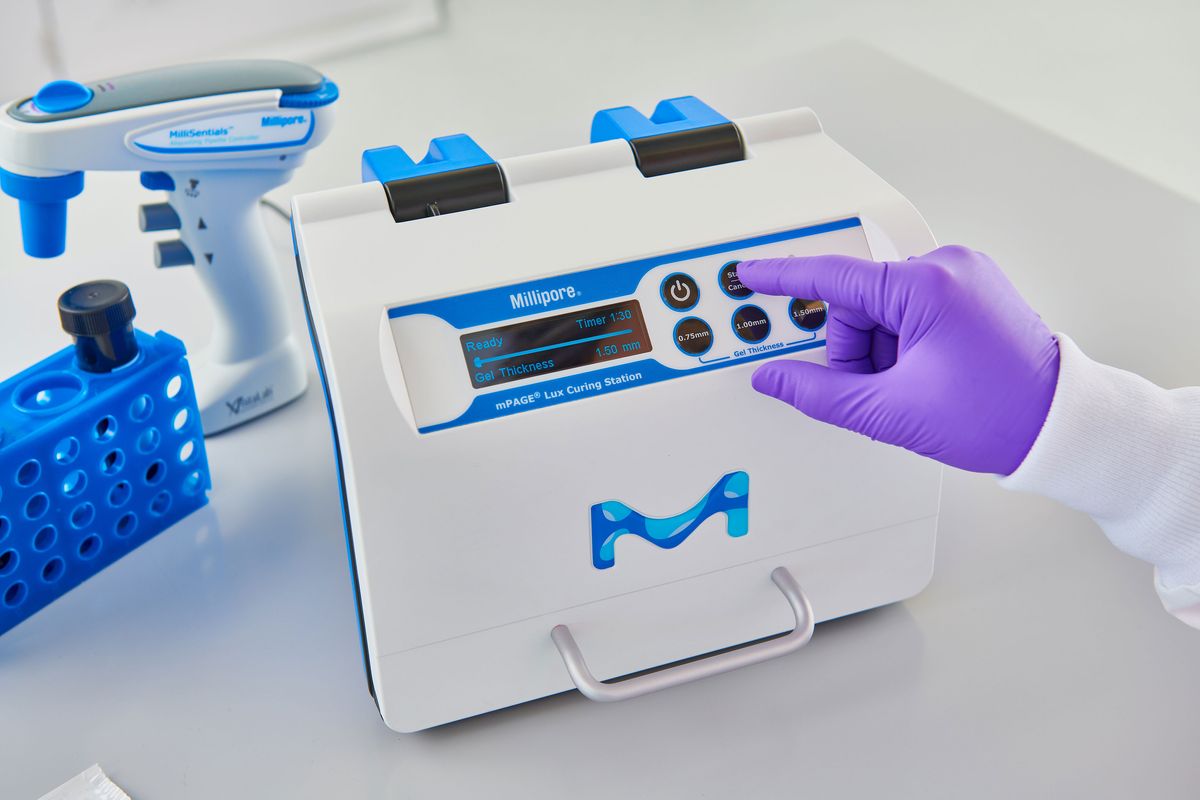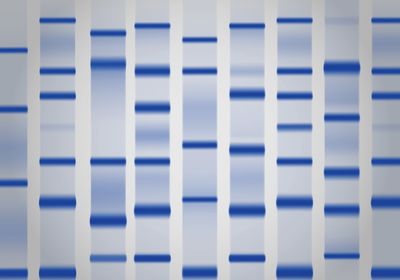SDS-PAGE Technology for the 21st Century
New innovations streamline and simplify SDS-PAGE from a multi-hour workflow to a matter of minutes.
Sodium dodecyl sulfate-polyacrylamide gel electrophoresis (SDS-PAGE) uses an electric current to separate proteins in a heterogeneous sample according to molecular weight and is one of the most commonly used techniques in the life sciences.1,2 The polyacrylamide gel is an integral part of SDS-PAGE. However, despite the technique being over 50 years old, most researchers still cast gels by hand via a time-consuming process that can take 90 minutes or longer. Furthermore, scientists create these gels using the toxic compounds ammonium persulfate (APS) and tetramethylethylenediamine (TEMED) to catalyze the polymerization of acrylamide and bisacrylamide into polyacrylamide.

Pre-cast gels are commercially available, but they are expensive and their packaging tends to generate considerably more waste than hand-casting. Moreover, researchers cannot modify the composition of pre-cast gels to fit their experiments.2 All of this ultimately creates a dilemma where scientists must choose between time, resources, and flexibility. As such, pre-cast gels have not superseded hand-casting as the preferred method among the scientific community.
Clearly, new innovations are needed for this old workhorse technique, and the mPAGE® Lux Casting System provides a novel solution. Designed to provide flexibility and reliability without incurring costs in terms of time, resources, or waste, the mPAGE® Lux Casting System uses three pre-made reagents and a curing station to produce gels in a process that takes about three minutes. The system generates Bis-Tris gels as opposed to commonly used Tris-Glycine gels, enabling shorter run times and longer shelf lives. The system further removed the need for APS and TEMED, which are toxic compounds. Finally, because gels can be rapidly made on-demand, researchers no longer have to risk wasting resources on pre-preparing gels that will go unused.
Learn more about how a new system lets researchers produce SDS-PAGE gels on-demand and to their own specifications in three minutes.
What is your biggest western blotting pet peeve?
- Nowakowski AB, et al. Metallomics. 2014;6(5):1068-78.
- Koshkina MK, et al. Electrophoresis. 2023;44(15-16):1155-1164.


